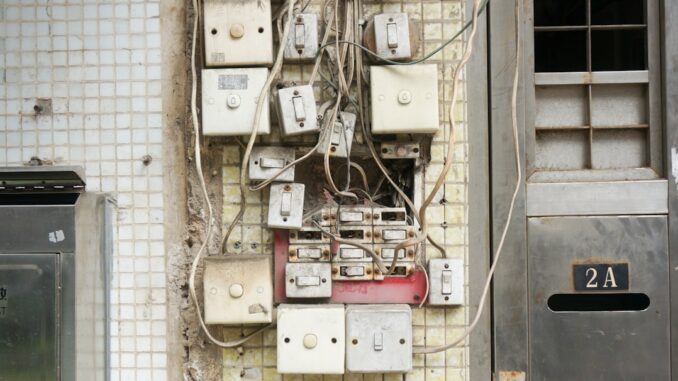
Adapting historic homes for energy efficiency presents unique challenges due to structural limitations, regulatory constraints, and financial considerations. Balancing preservation with modernization requires innovative solutions and careful planning. Understanding these barriers is crucial for successful retrofitting projects.
Structural Limitations and Technical Challenges
Historic buildings often come with thick masonry walls, ornate detailing, and period-specific design attributes, making it difficult to implement modern energy-efficient systems without compromising the building’s integrity. For instance, retrofitting energy-efficient windows in a historic structure must account for both aesthetic and functional aspects. Modern double-glazed windows can significantly reduce energy loss but may alter the appearance of the building’s façade. Alternative solutions such as interior storm windows or customized glazing that matches the original aesthetic can be employed to navigate these challenges. Similarly, installing advanced HVAC systems may necessitate non-intrusive methods that preserve existing fabric and surfaces while enhancing overall energy performance. (energycurated.com)
Successful low-energy building design hinges on careful planning. Focus360 Energy can help.
Regulatory Constraints and Preservation Guidelines
In many regions, historic buildings are subject to strict preservation regulations that can impede energy efficiency upgrades. In the UK, for example, the listing system assigns Grade I, II*, or II status to buildings of historic and architectural importance, often complicating efforts to adapt these buildings to contemporary needs amid housing, energy, and climate crises. Historic England, tasked with overseeing these listings, emphasizes conservation over preservation, managing changes sensitively. However, local authorities, which approve repair requests, face resource shortages, making the process cumbersome. Despite these challenges, there’s robust demand for listed buildings, appreciated for their heritage and potential for eco-friendly renovations. Critics argue that the listing system is uneven, overlooking postwar buildings and social housing’s original purposes. Innovative retrofits demonstrate potential for modernizing historic places, but balancing architectural heritage with environmental conservation remains contentious. The overarching goal is to see historic environments as modernizing foundations, not obstacles. (ft.com)
Financial Constraints and Incentives
Implementing energy efficiency measures in historic buildings can be financially challenging. The cost of specialized materials, skilled labor, and tailored design solutions for historic structures can be higher compared to standard construction practices. Limited funding options and financial incentives for historic preservation and energy efficiency upgrades can further hinder progress. Overcoming these financial constraints may involve exploring grants, tax incentives, or partnerships with preservation organizations, energy utilities, or government agencies to secure the necessary funding for energy efficiency improvements. (powerefficiency.com)
Balancing Preservation with Modernization
Balancing the need for energy efficiency with the desire to preserve historic character requires a thoughtful approach. For example, adding insulation to attics and walls, installing window insulation films, or using breathable insulation materials can minimize heat transfer while respecting the building’s historical integrity. These techniques help maintain a comfortable indoor environment and reduce the need for excessive heating or cooling. (powerefficiency.com)
Conclusion
Adapting historic homes for energy efficiency is a complex endeavor that requires careful consideration of structural, regulatory, and financial factors. By understanding and addressing these challenges, property owners can successfully modernize their historic homes while preserving their unique character.


Given the regulatory constraints you mentioned, could you elaborate on specific examples of how local authorities are navigating the balance between preservation guidelines and the urgent need for energy-efficient retrofits in historic social housing?
That’s a great question! The tension between preservation and urgent energy needs is definitely felt at the local level. Many authorities are using pilot programs and demonstration projects to test innovative retrofit solutions in social housing, carefully monitoring results and adjusting guidelines accordingly. Collaboration with heritage organizations is also key. What innovative approaches have you seen or heard about?
Editor: FocusNews.Uk
Thank you to our Sponsor Focus 360 Energy
The financial constraints are significant, especially when specialized skills are required. Could we explore collaborative funding models, perhaps blending public grants with private investment, to alleviate the burden on individual owners and encourage wider adoption of energy-efficient retrofits?
That’s an excellent point about collaborative funding! Blending public grants with private investment could definitely unlock more potential for energy-efficient retrofits in historic homes. What are your thoughts on the role of community trusts or revolving loan funds in facilitating these projects?
Editor: FocusNews.Uk
Thank you to our Sponsor Focus 360 Energy
The regulatory constraints are indeed a critical aspect. How can we streamline the approval processes at the local authority level to facilitate sensitive and timely energy-efficient upgrades, perhaps through specialized heritage retrofit teams or pre-approved solution catalogues?
That’s a key point! Specialized heritage retrofit teams and pre-approved solution catalogues could certainly speed things up at the local level. Perhaps a national framework with local adaptations could ensure consistency while respecting regional differences? It would be great to explore successful models from other countries too.
Editor: FocusNews.Uk
Thank you to our Sponsor Focus 360 Energy
Considering the interplay between structural limitations and regulatory constraints, how can we better quantify the embodied carbon within existing historic building materials to inform retrofit decisions and potentially offset new material use?